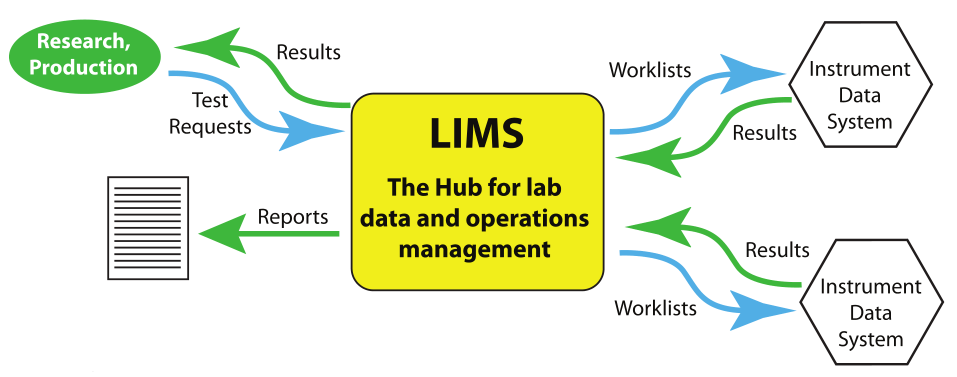Book:Justifying LIMS Acquisition and Deployment within Your Organization/Introduction to LIMS and its acquisition and deployment/Why a LIMS matters
1.5 Why a LIMS matters
Though external pressures to improve operations may have increased, the goals of laboratory work today are much the same as they were in the past: produce high-quality results, with the best productivity possible while keeping initial and ongoing costs to a reasonable level. The goals differ only slightly among the different types of labs:
- Testing: Whether supporting research programs or conducting contract-based analytical testing for clients, work efficiently and effectively to produce high-quality and accurate analytical test results while maintaining profitability.
- Research: Develop new products, solve production problems, and solve real-world problems (e.g., curing disease, developing alternative fuels, improving food production, etc.), while ensuring at the same time that analyses and studies are conducted consistently, accurately, and ethically.
- QA/QC: Support production and manufacturing operations through accurate and timely testing, while promoting higher levels of quality, consumer safety, and consumer satisfaction.
The goals are typically driven by management and other key stakeholders within the organization. Those same people hopefully recognize that meeting those goals requires more than simply managing the lab's personnel. The lab's success also hinges upon the management of equipment, infrastructure (including power), data, information, and the systems used to produce and manage the products of the lab work: analytical data and information. The previous sections examined the transition from paper-based to electronic lab, and from that examination we begin to see that LIMS and other laboratory informatics solutions are increasingly an important part of the equation for organizational success. This growing informatics architecture is a hierarchical structure with work requests and the needs of regulatory and corporate compliance flowing into it, and produced worklists being distributed to stations when the analysis is completed. The results then flow back into the LIMS, the central hub for this activity. Lab results can be interrogated, analyzed, and distributed as needed (Figure 1).
|
Your organization must be able to support the lab's goals, meet the demands of regulators, and meet your organization's responsibilities for data governance, all while maintaining an economically sound operation. Can that realistically be done without a LIMS supporting your operations? For example, would you run your accounting department without a software system? From that viewpoint, your accounting system's benefits to that department's work are similar in principle to those provided to your lab by a LIMS.
This section only touches upon why a LIMS matters to a laboratory and meeting its operational goals. Introducing a LIMS is an opportunity to solve operational management issues, improve productivity, make it easier to meet regulatory requirements and guidelines, turn the lab's data and information into a valuable asset, and meet modern demands for data governance. The next chapter goes into greater detail about the organizational, economic, and practical justifications behind acquiring and deploying a LIMS in your lab, further clarifying why the LIMS should matter to you and your organization, and why the benefits of LIMS far outweigh the costs.
References
Citation information for this chapter
Chapter: 1. Introduction to LIMS and its acquisition and deployment
Title: Justifying LIMS Acquisition and Deployment within Your Organization
Edition: First Edition
Author for citation: Joe Liscouski, Shawn E. Douglas
License for content: Creative Commons Attribution-ShareAlike 4.0 International
Publication date: July 2023










